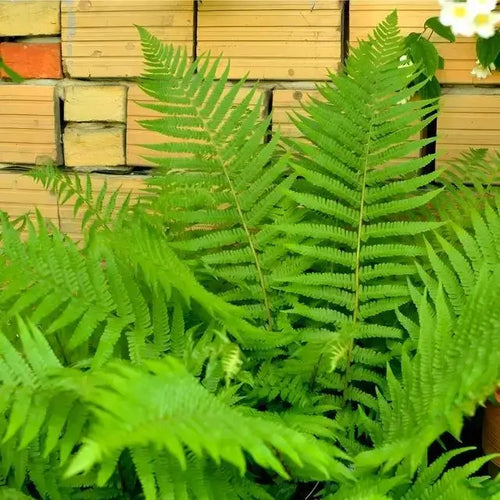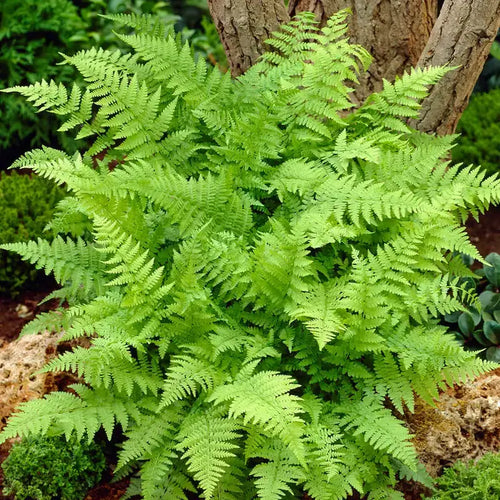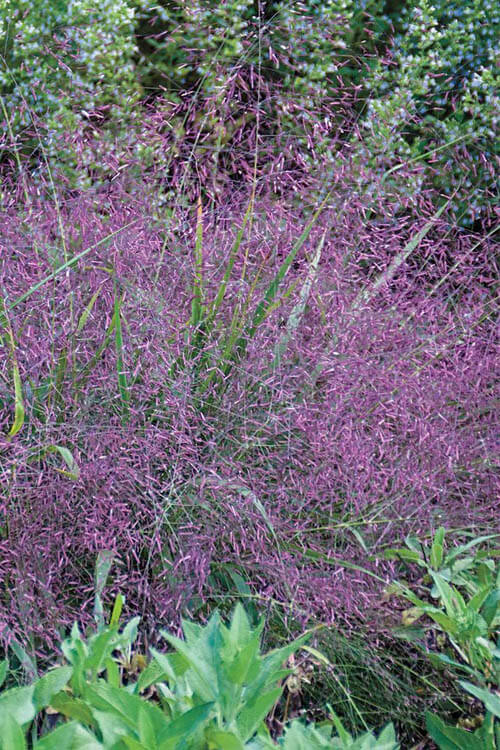Native ferns are fascinating plants that can benefit your outdoor space
These ancient plants have evolved over millions of years and adapted to various climates and ecosystems worldwide. Growing native ferns in your garden or outdoor area can enhance its beauty, promote biodiversity, and provide a habitat for wildlife. This article explores the benefits of incorporating native ferns into your outdoor space, highlighting their aesthetic appeal, environmental advantages, and contribution to ecosystem conservation.
I. Aesthetic Appeal: Diverse and Unique Foliage: Native ferns exhibit a wide range of leaf shapes, textures, and colors, making them visually captivating additions to any garden. Their delicate fronds and intricate patterns create a sense of tranquility and elegance, adding interest and diversity to the overall landscape design.
Year-Round Interest: Unlike many other plants, native ferns can provide visual interest throughout the year. Even during the winter months, when most plants are dormant, some fern species retain their green foliage, providing a touch of vibrancy to your outdoor space.
Versatile Use in Landscaping: Native ferns can be integrated into various garden designs, including woodland gardens, rock gardens, shade gardens, or understory plants beneath trees. They can be utilized as groundcovers, border plants, or focal points, offering endless possibilities for creative landscaping arrangements.
II. Environmental Benefits: Soil Stabilization: Native ferns have fibrous root systems that help prevent soil erosion. Their extensive root networks bind the soil together, reducing the risk of runoff and improving water infiltration, particularly on sloping terrains.
Moisture Regulation: Ferns are excellent at regulating moisture levels in the surrounding environment. They can capture and retain rainwater, thus reducing stormwater runoff and supporting natural water cycles. By growing native ferns, you can contribute to mitigating local flooding and maintaining healthy soil moisture levels.
Air Purification: Like other green plants, ferns play a crucial role in purifying the air by sponging carbon dioxide and casting oxygen during photosynthesis. Their presence can help improve air quality and create a more nourishing habitat for humans and wildlife.
III. Biodiversity and Habitat Creation: Supporting Native Species: By growing native ferns, and promote biodiversity in your outdoor space. Butterfly and Moth Host Plants: Many fern species act as host plants for butterflies and moths, serving as a critical food source for their caterpillars. By incorporating native ferns into your garden, you can attract and support a diverse range of these delicate pollinators, enhancing the ecological balance in your outdoor space.
Bird and Insect Habitat: Ferns, with their intricate fronds, offer shelter and nesting opportunities for various bird species. Additionally, the dense foliage of ferns provides an ideal environment for beneficial insects, such as pollinators and pest predators, contributing to a healthy and balanced ecosystem.
IV. Ecosystem Conservation: Preserving Native Plant Communities: By growing native ferns, you actively participate in conserving local plant communities and their associated ecosystems. Native plants have co-evolved with local fauna and are often better adapted to withstand local environmental conditions, making them essential for preserving regional biodiversity.
Invasive Species Control: Native ferns can help suppress the growth of invasive plant species. Their dense foliage and rapid growth can outcompete invasive plants, preventing their spread and reducing the need for chemical herbicides.
Education and Awareness: Growing native ferns in your outdoor space provides an opportunity to educate others about the importance of native plant conservation and biodiversity benefits. Sharing your knowledge and experiences can inspire others to adopt sustainable gardening practices and contribute to a healthier environment.
Conclusion: The benefits of growing native ferns in your outdoor space range from aesthetic appeal to environmental advantages and ecosystem conservation. These resilient and captivating plants offer an array of textures, colors, and forms, creating a visually stunning landscape throughout the year. Native ferns also contribute to soil stabilization, moisture regulation, and air purification while supporting local biodiversity and creating habitats for wildlife.
By embracing native ferns, you can transform your outdoor space into a thriving ecosystem that promotes sustainability, conservation, and appreciation for the natural world. Growing native ferns in your outdoor space can be a rewarding and relatively straightforward endeavor. Native ferns have specific requirements for optimal growth, and understanding these factors will help ensure their successful cultivation.
Here are some critical steps to consider when growing native ferns in your outdoor space: Research Native Fern Species: Research native fern species suitable for your region. Local nurseries, botanical gardens, or native plant societies can provide valuable information about fern species native to your area. Consider factors such as sunlight requirements, soil preferences, and moisture needs to choose suitable ferns for your outdoor space.
Most native ferns thrive in shady or partially shaded areas with indirect sunlight
Choose a location in your outdoor space that provides the ideal light conditions for the specific fern species you plan to grow. Evade putting them in direct sunlight, which can scorch their delicate fronds.
Prepare the Soil: Native ferns generally prefer well-drained, humus-rich soils. Prepare the ground by removing any weeds, rocks, or debris. If the soil in your outdoor space is heavy or clay-like, consider amending it with organic matter to improve drainage and nutrient content.
Planting: Dig a spot that is just bigger than the root ball of your fern. Gently place the fern into the hole, ensuring that the top of the root ball is level with the soil surface. Backfill the hole with soil, hardening it gently around the plant. Water the newly planted fern thoroughly to resolve the ground and provide moisture to the roots.
Watering: Native ferns typically prefer moist soil conditions. While they prefer to avoid being constantly waterlogged, keeping the soil moist is essential, especially during establishment. Water deeply and regularly, but avoid overwatering, as this can lead to root rot. Adding organic mulch around your ferns can help retain soil moisture, regulate soil temperature, and suppress weed growth. Use a natural mulch, such as wood chunks or slivered leaves, and distribute it around the base of the plants, leaving a small gap around the stem to prevent rot.
Maintenance: Regular maintenance practices will promote the health and vigor of your native ferns. Remove any dead or damaged fronds to maintain a tidy appearance and allow new growth to emerge. Avoid excessive fertilization, as ferns generally thrive in nutrient-rich soils.
However, if the foliage shows signs of nutrient deficiencies, apply a slow-release, balanced organic fertilizer according to the manufacturer's instructions. Protection from Pests and Diseases: Native ferns resist many common pests and diseases.
However, watching for slug damage, aphids, or fungal infections is still essential. Take appropriate measures, such as handpicking pests or using organic pest control methods, to protect your ferns from damage. Observing and Enjoying: Take the time to watch and enjoy the growth and development of your native ferns.
Notice how they respond to different seasons and environmental conditions. Over time, you'll better appreciate these ancient plants and their unique characteristics. By following these guidelines and adapting them to the specific needs of the native fern species you choose, you can successfully grow and nurture these beautiful plants in your outdoor space.
2 Easy Ferns To Grow




















































